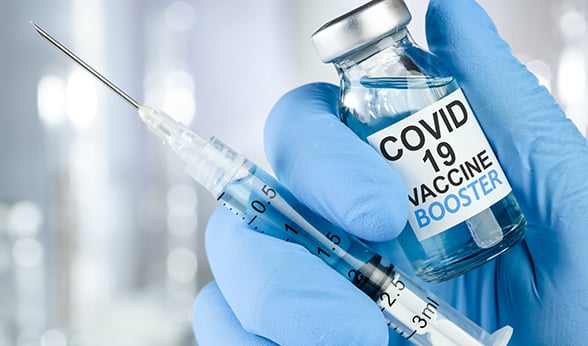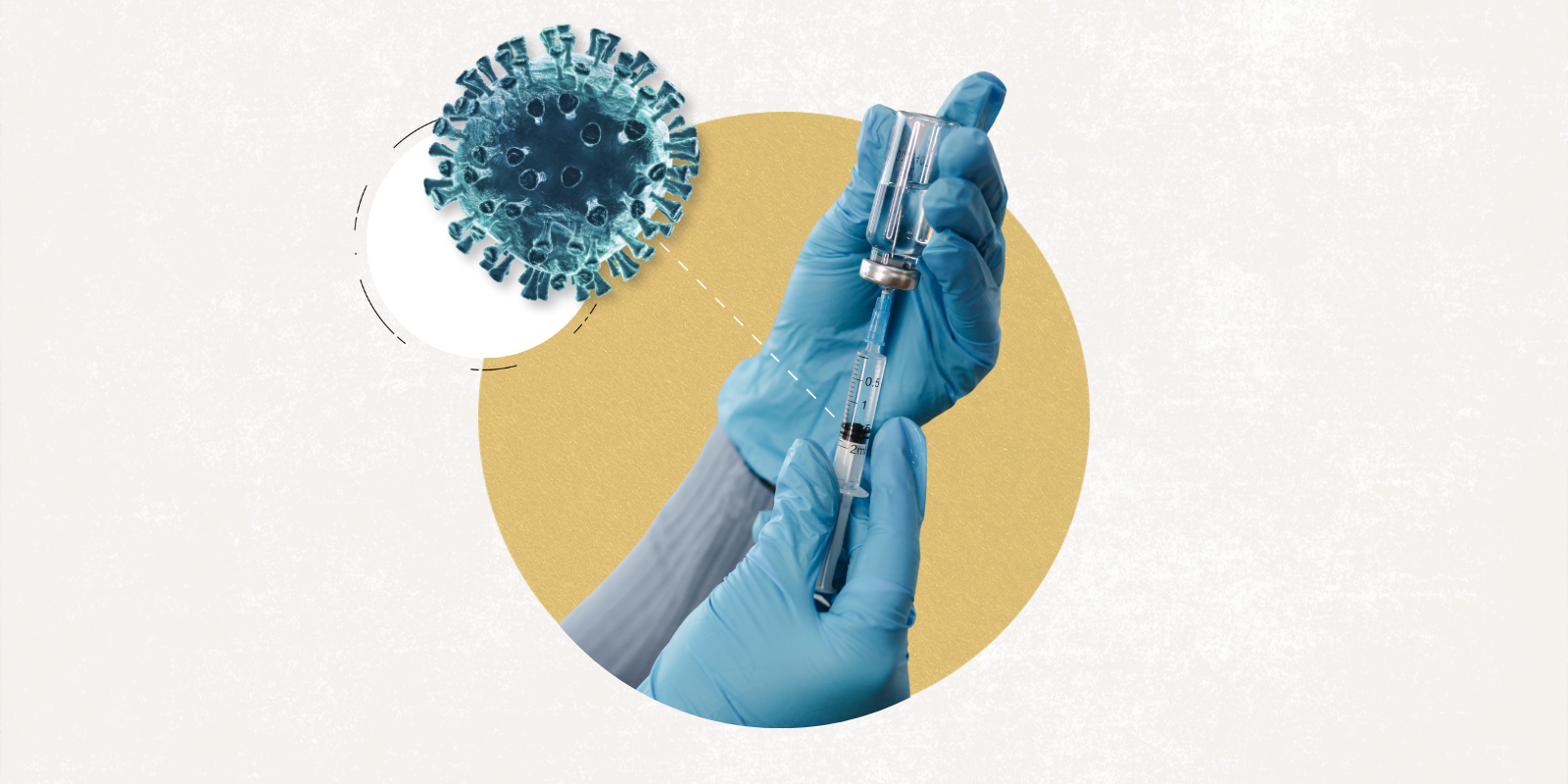Omicron is hitting the nation hard, pushing delta out as it infects at a higher rate of speed than any SARS-CoV-2 variant so far. In past days, infection rates in some of Colorado’s mountain towns have topped the nation, even in areas with high vaccination rates.
Hospitals are overflowing, schools are under-staffed and fewer airplanes are flying. It sounds like spring 2020 all over again. But it’s not.
Misery does lie ahead. Flu-like symptoms. Missed work. Policy headaches. Crippling numbers of sick calls from employees, as the airlines are experiencing. And COVID-19’s surprise track record still adds uncertainty.
But from a medical science point of view, with still-valuable vaccines, a growing toolbox of treatments and a variant that’s increasingly proving itself less deadly, some experts believe that omicron is not only far from the ugly past. It might signal a brighter future.
“Time will tell,” said Ross Kedl, PhD, a professor of immunology and biology in the University of Colorado School of Medicine. Meanwhile, Kedl and Krishna Mallela, PhD, a professor in the Skaggs School of Pharmacy and Pharmaceutical Sciences on the CU Anschutz Medical Campus, share points for people to keep in mind.
1: It’s infectious
“Brace yourself. You’re going to run into it,” Kedl said of omicron. “The reports are, it’s about 95% of all cases, and it’s much more contagious. It seems to be better (than other variants) at aerosol transmission rather than just droplet transmission.” Experts recommend swapping any cloth masks people have in their drawers with more-protective KN95 or N95 masks.
Although proving less severe in most cases, with omicron’s U.S. infection rate reaching a record-breaking 700,000-plus cases a day, the World Health Organization last week criticized the use of the word “mild.” Global cases have surpassed 300 million, and half of the world population remains unvaccinated.
 Cuter doesn't mean better: Some experts advise swapping the cloth masks (left) for the more-protective KN95 and N95 masks (right), especially with the highly transmissible omicron surge. Cuter doesn't mean better: Some experts advise swapping the cloth masks (left) for the more-protective KN95 and N95 masks (right), especially with the highly transmissible omicron surge. |
The sheer number of infected people is impacting businesses, commerce and the healthcare system. “The hospitals are getting full,” said Mallela, which threatens care for everyone, not just COVID patients. “You may see the same number of patients who are in the hospitals as was with delta,” he said.
2: Death rate disconnect
“Yet, even in the midst of that explosion of cases and the total number of people in hospitals, those people are less likely to be on respirators and die,” Kedl said, adding that the higher survival rate even includes, though to a lesser extent, unvaccinated people.
The omicron variant, for reasons still unknown, seems to stay in the upper-respiratory tract and not wreak havoc on the lungs, like its predecessors did, said Mallela, who specializes in structural biology and biophysics and studies how SARS-CoV-2 variants evolve and evade antibodies.
The death rate for vaccinated people, including those 75 and older, has fallen relative to the case rate, with some studies showing rates have dropped to or below annual flu death rates. Especially with the unsettling early reports that the variant with its 50 mutations (30 to its spike protein) was evading the vaccine, the severity decline was welcome news.
Still, it’s not time for everyone to let their guard down and put their masks away, Mallela said. “The spike is really very sharp, and it has not reached the plateau. Although the symptoms are less severe, I can see the death rate is slowly increasing because of the number of people getting infected.”
“The spike is really very sharp, and it has not reached the plateau. Although the symptoms are less severe, I can see the death rate is slowly increasing because of the number of people getting infected.” – Krishna Mallela, PhD
The best advice remains: Get vaccinated and boosted, he and Kedl said.
3: Vaccines still work
Despite the vaccines’ decline in preventing infections, they are still doing their chief job, Kedl said. “When a vaccine works, it means that you are protected from any serious consequences of infection,” Kedl said. The COVID-19 vaccines’ success in this broad mission has, so far, continued with all variants, including omicron.
“Every bit of data we have continues to confirm that your immune memory is intact, your T-cell response is intact, a lot of your antibodies you have – even if they are not neutralizing the virus – are still providing a significant amount of protection,” Kedl said.
4: Boosted is better
Boosters are further proving their worth, something the 65% of vaccinated Americans still not boosted might want to know. Besides taming infection, a third dose is even keeping omicron infections at bay. “The booster dose is somehow able to increase neutralization with the omicron variant,” Mallela said.
The news is timely for parents of children ages 12 to 15, recently approved for booster shots.

Booster shots seem to be proving their worth, often keeping omicron less severe or even at bay, experts say. |
Moreover, the booster dose protects against past, and likely future, variants, with immunity lasting longer than from the first rounds of shots, Kedl said. “The booster gives you not only a boost of the magnitude of the immunity; it also increases the durability and breadth of your immunity.”
5: We’re not done yet
Although the COVID path is uncertain, new strains are inevitable, Kedl and Mallela said. “The virus is now endemic,” Kedl said. “It’s going to spin out variants at a certain rate. The rate in which it does so is dependent on the frequency of people that have no immunity at all. It’s the unvaccinated and the unimmune who are driving mutation and variation.”
So the question, Kedl said, is: When will the next variant emerge, and how divergent will it be?
“Out of all the variants so far, Mallela said, “delta was the most serious. And it is getting replaced with omicron.” If the so-far most infectious omicron picks up the more-virulent delta mutations, “that would be very serious.”
But from a brighter perspective, omicron could pave the way to better immunity, both through the body’s natural responses and science’s ability to create variant-specific vaccines, Kedl said.
Omicron’s many mutations could prove useful, he said. “If you get exposed to that and/or boosted by that, you are likely to have an even broader immune response that has a better chance of going after whatever the next mutation happens to be.”
6: Hope for infection?
If omicron provides a stronger immune response, some people wonder: Should we just get infected? “I understand that,” Kedl said. “But the idea of going and getting it? I don’t know. Are we going to have measles and mumps parties like they did in the ‘40s and ‘50s? There’s no sense in that.”
The better response, for most people, would be enjoying a refreshing sense of security unseen in the past two years, Kedl said.
“I think if you are in a low-risk group: if you are under the age of 65; you don’t have any complications; you’re not immunocompromised; you’re not undergoing cancer treatments; and you’ve been vaccinated and boosted, you should feel increasingly comfortable about how low your risk is for moving about freely.”
7: Boosters are the future
For now, both experts predict COVID vaccines remain part of the future, whether they are variant-specific versions, which Kedl said could be developed quickly, or an inactivated viral version, which Mallela suspects could be the answer to broader coverage as the pandemic continues into an endemic.
“If you think about the flu, we make new vaccines every year, and we don’t keep boosting against all the original ones,” Kedl said. “You modify it every year to adapt to whatever the current strain happens to be. So for coronavirus, I would anticipate the next booster we get is probably going to be variant-based. Maybe it’s omicron. I’m not sure.”
Pfizer and Moderna have announced that an omicron-specific version of their mRNA vaccines should be ready, if needed, by March.
8: A reason for hope?
Considering omicron’s characteristics, some experts are asking the question: Is it the path to immunity?
“We’re not getting rid of SARS-CoV-2. It’s not going to go away,” Kedl said. “The question is, as it spikes and falls, how many people is it overwhelming with severe disease, and how well do our vaccines manage that?
“So, yes, I think there’s good reason to hope that this is the road out
of the pandemic and into a world in which we end up treating SARS-CoV-2
like our standard seasonal flu.” – Ross Kedl, PhD
“So, in the path to creating a kinder, gentler endemic virus, that road is going to be paved by something like omicron that has a milder infection and stays in the upper respiratory tract and continues to be sensitive to the vaccine tools that we have available to us.
“So, yes, I think there’s good reason to hope that this is the road out of the pandemic and into a world in which we end up treating SARS-CoV-2 like our standard seasonal flu. Plenty of people in my line of work are saying: Yeah, that’s a reasonable scenario, if not the most likely scenario. I think all the signs and the tools are in place to make that a reality.”



.png)

